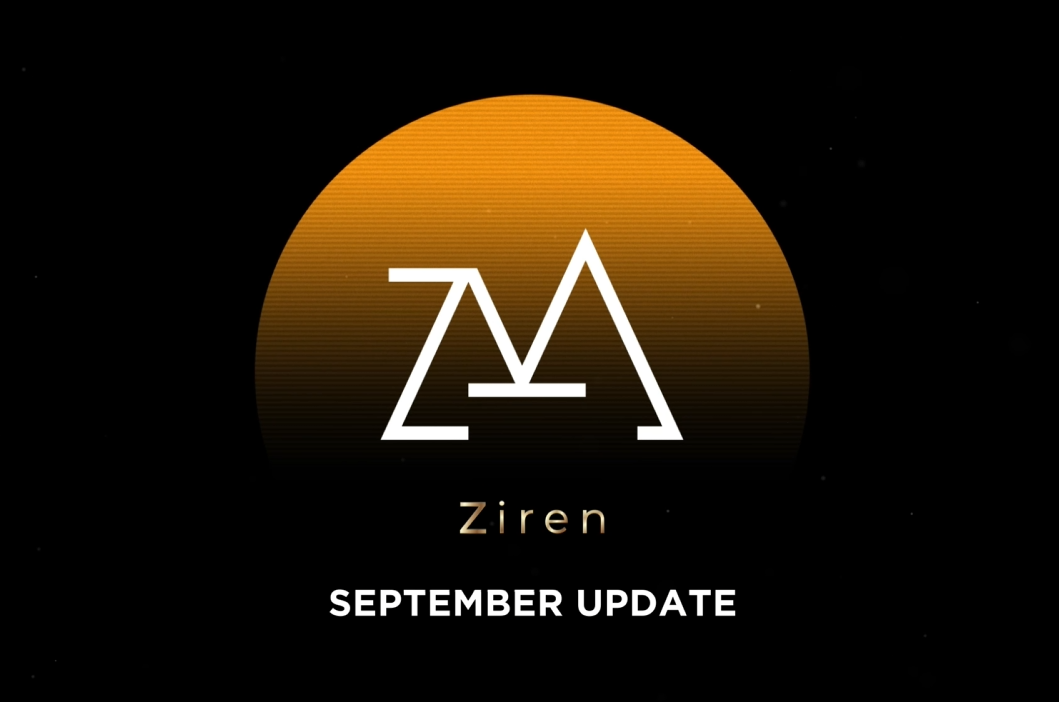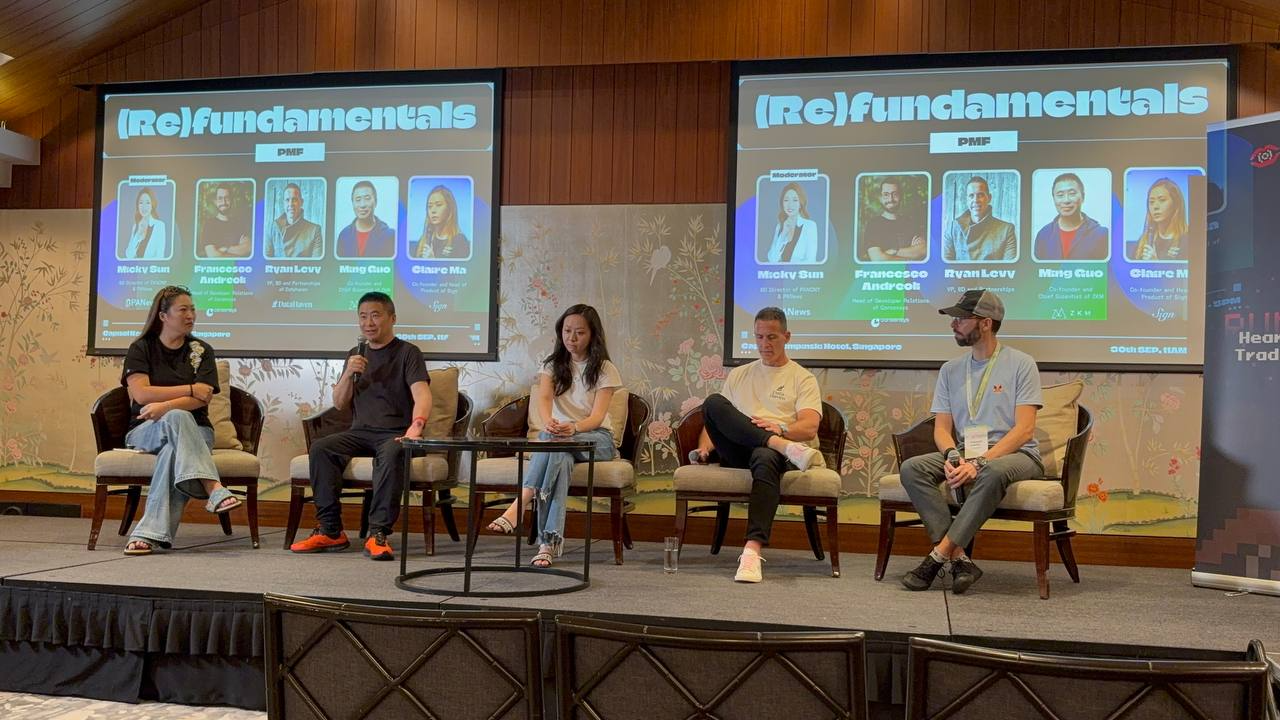
Ziren is now live in the wild. GOAT Network is the first production deployment using Ziren as its default proving engine - verifying L2 state transitions on Bitcoin, securing the native bridge, and enabling low-latency proofs.+
This month we documented the full stack, received an external evaluation of Ziren v1.1.4, shipped part 3 of our Multivariate Sumcheck series, and closed the Early Contributor Program that helped build this foundation.
Ziren is a production-grade zkVM stack built on MIPS32r2; GOAT Network is the working example. If you want to build on Ziren or integrate it into your system, contact the ZKM team on Discord or start building on GitHub.
We published an overview of how Ziren, the distributed prover, and the verification toolchain underpin GOAT Network’s rollout - detailing the history, vision and reasoning behind building the full stack in-house. The goal is verifiable bridges, predictable settlement, and a coordination layer for Bitcoin-aligned applications.
In interviews with Cointelegraph, The Block, and The Bitcoin Economy Podcast, ZKM CEO Kevin Liu further outlined how GOAT’s decentralized sequencer model plus ZK proofs supports sustainable, self-custodial BTC yield sourced from network usage rather than token emissions.

In line with GOAT Network’s Token launch, we concluded the ZKM Early Contributor Program - recognizing contributors across zkVM testing, GitHub changes, technical content, and community moderation
The program played an invaluable early part to help ship the stack now powering GOAT Network, and the ZKM team is deeply grateful for all contributions to this vital phase.
Full details can be found on the ZKM Blog, while eligibility checking can be found here.
Prooflab, a ZK research team working with the Ethereum Foundation, produced an independent evaluation of Ziren covering the core VM, distributed prover, and WASM verifier. It validates the MIPS32r2 design, a STARK backend with optional SNARK wrapping, and browser verification; but flags API stability, third-party audits, and GPU transparency as areas for improvement.
The report also states that Ziren is particularly well-suited to Bitcoin L2 implementations and hybrid rollup systems where MIPS toolchain maturity provides advantages.
Ziren has been designed around the concept of proof longevity, using the stable MIPS32r2 instruction set to ensure audits, compilers, and prover optimizations remain valid over time. The approach mirrors Bitcoin’s rule stability, pushing innovation to higher layers while preserving core consistency. By ossifying the ISA, ZKM prioritizes reproducibility, credible neutrality, and reliable upgrades, reducing long-term costs and sustaining performance gains across releases.
Earlier in the month, we released an article explaining the concept of proof longevity and how Ziren’s architecture is consistent with Bitcoin’s ethos.
We also released part 3 of our Multivariate Sumcheck series, detailing how diverse constraints reduce to the Multivariate Sumcheck Protocol using ZeroCheck, Rational Sumcheck, multiset equality, permutation checks, and LogUp lookups - turning pointwise checks into efficient global verifications used in Plonk/HyperPlonk, Halo2, and zkVM frameworks.
Previous parts of the series can be found on the ZKM Blog.
The ZKMteam was active across Token2049 week, contributing talks and roundtables on proof systems, verifiable AI, and product fundamentals.

Whitepaper Reading Sessions: CTO Stephen Duan participated in roundtable discussions on current ZK research alongside speakers from Boundless, Lagrange, and Stanford.
Verifying Intelligence: Stephen also sat on a panel alongside speakers from Avail, Boundless, and Brevis - focused on taking ZK from theory to production, focusing on performance, decentralization, and standardization. Chief Scientist Ming Guo also featured at the event, giving an exclusive interview about ZKM’s origins, vision, and future plans.
(Re)Fundamentals: Hosted by Altlayer and EigenCloud, Ming also participated in a discussion on product–market fit and the principles shaping Web3 infrastructure.
AI Frontier:Stephen discussed how Ziren supports verifiable AI pipelines at an event hosted by 0G Labs and Lagrange, elucidating on the zkVM’s potential to enable dataset/weight commitments, proof-attested preprocessing and inference, compact proofs for on/off-chain verification, and distributed CPU/GPU proving.
Ecosystem Networking: The ZKM team also participated in networking events hosted by Aethir, Polygon, and Google Cloud, meeting builders, infra providers, and prospective partners.

Ziren is operating in production, with GOAT Network as the working example. The focus now is execution: broaden guest support, simplify verifier interfaces, and ship BitVM-aligned bridge components - while closing open items from the external review (API stability, third-party audits, and GPU transparency).
If you want to build on or integrate Ziren - Bitcoin rollups, bridge verification, or verifiable AI pipelines - reach out on Discord or start building on GitHub.
Ziren is now live in the wild. GOAT Network is the first production deployment using Ziren as its default proving engine - verifying L2 state transitions on Bitcoin, securing the native bridge, and enabling low-latency proofs.+
This month we documented the full stack, received an external evaluation of Ziren v1.1.4, shipped part 3 of our Multivariate Sumcheck series, and closed the Early Contributor Program that helped build this foundation.
Ziren is a production-grade zkVM stack built on MIPS32r2; GOAT Network is the working example. If you want to build on Ziren or integrate it into your system, contact the ZKM team on Discord or start building on GitHub.
We published an overview of how Ziren, the distributed prover, and the verification toolchain underpin GOAT Network’s rollout - detailing the history, vision and reasoning behind building the full stack in-house. The goal is verifiable bridges, predictable settlement, and a coordination layer for Bitcoin-aligned applications.
In interviews with Cointelegraph, The Block, and The Bitcoin Economy Podcast, ZKM CEO Kevin Liu further outlined how GOAT’s decentralized sequencer model plus ZK proofs supports sustainable, self-custodial BTC yield sourced from network usage rather than token emissions.

In line with GOAT Network’s Token launch, we concluded the ZKM Early Contributor Program - recognizing contributors across zkVM testing, GitHub changes, technical content, and community moderation
The program played an invaluable early part to help ship the stack now powering GOAT Network, and the ZKM team is deeply grateful for all contributions to this vital phase.
Full details can be found on the ZKM Blog, while eligibility checking can be found here.
Prooflab, a ZK research team working with the Ethereum Foundation, produced an independent evaluation of Ziren covering the core VM, distributed prover, and WASM verifier. It validates the MIPS32r2 design, a STARK backend with optional SNARK wrapping, and browser verification; but flags API stability, third-party audits, and GPU transparency as areas for improvement.
The report also states that Ziren is particularly well-suited to Bitcoin L2 implementations and hybrid rollup systems where MIPS toolchain maturity provides advantages.
Ziren has been designed around the concept of proof longevity, using the stable MIPS32r2 instruction set to ensure audits, compilers, and prover optimizations remain valid over time. The approach mirrors Bitcoin’s rule stability, pushing innovation to higher layers while preserving core consistency. By ossifying the ISA, ZKM prioritizes reproducibility, credible neutrality, and reliable upgrades, reducing long-term costs and sustaining performance gains across releases.
Earlier in the month, we released an article explaining the concept of proof longevity and how Ziren’s architecture is consistent with Bitcoin’s ethos.
We also released part 3 of our Multivariate Sumcheck series, detailing how diverse constraints reduce to the Multivariate Sumcheck Protocol using ZeroCheck, Rational Sumcheck, multiset equality, permutation checks, and LogUp lookups - turning pointwise checks into efficient global verifications used in Plonk/HyperPlonk, Halo2, and zkVM frameworks.
Previous parts of the series can be found on the ZKM Blog.
The ZKMteam was active across Token2049 week, contributing talks and roundtables on proof systems, verifiable AI, and product fundamentals.

Whitepaper Reading Sessions: CTO Stephen Duan participated in roundtable discussions on current ZK research alongside speakers from Boundless, Lagrange, and Stanford.
Verifying Intelligence: Stephen also sat on a panel alongside speakers from Avail, Boundless, and Brevis - focused on taking ZK from theory to production, focusing on performance, decentralization, and standardization. Chief Scientist Ming Guo also featured at the event, giving an exclusive interview about ZKM’s origins, vision, and future plans.
(Re)Fundamentals: Hosted by Altlayer and EigenCloud, Ming also participated in a discussion on product–market fit and the principles shaping Web3 infrastructure.
AI Frontier:Stephen discussed how Ziren supports verifiable AI pipelines at an event hosted by 0G Labs and Lagrange, elucidating on the zkVM’s potential to enable dataset/weight commitments, proof-attested preprocessing and inference, compact proofs for on/off-chain verification, and distributed CPU/GPU proving.
Ecosystem Networking: The ZKM team also participated in networking events hosted by Aethir, Polygon, and Google Cloud, meeting builders, infra providers, and prospective partners.

Ziren is operating in production, with GOAT Network as the working example. The focus now is execution: broaden guest support, simplify verifier interfaces, and ship BitVM-aligned bridge components - while closing open items from the external review (API stability, third-party audits, and GPU transparency).
If you want to build on or integrate Ziren - Bitcoin rollups, bridge verification, or verifiable AI pipelines - reach out on Discord or start building on GitHub.